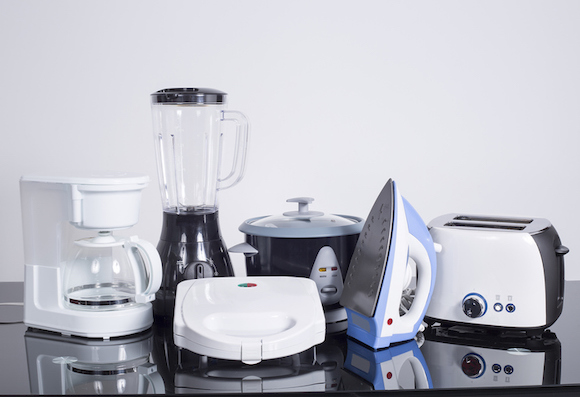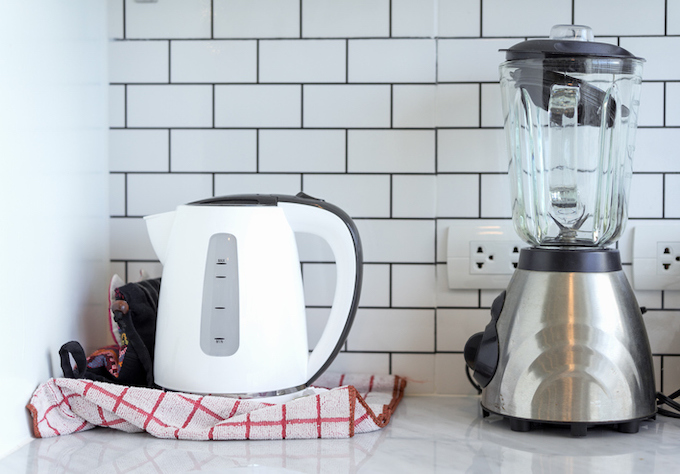At first it was just a toaster. Then a food processor. You had plenty of room for those.
But before you knew it you had an egg boiler, a waffle iron, an Instant Pot and a juicer. Now your cabinets are overflowing and your countertop looks like a Bed Bath and Beyond.
So, what’s the best way to store kitchen appliances?
This article will explore how to take a methodical approach to organizing and storing large and small appliances in your own kitchen and elsewhere in the home.
How to Store Kitchen Appliances
To start, identify storage space high up in your kitchen or pantry – for heavier appliances, look to utilize the lower shelves. If you have many large appliances, you may have to identify other portions of your home for storing items you only use for entertaining. Consider closets or even space in the garage.
Sort you appliances, starting with those you use the most such as a coffee maker and blender. Plan to store these in reachable and convenient spots. Appliances you use seasonally, for parties, or for holidays can be put away in more out of the way spots.
To make the best use of your space, consider getting rid of appliances that you never use. Here’s looking at you, electric cheese grater.
Now, let’s put away your appliances into their forever homes…
Storing Small Appliances
For small appliances, search for space on the top shelves of your upper kitchen cabinets: high in the pantry, and above the refrigerator. You may also stack some appliances on top of the cabinets, but you may want use a dust cover for them since they will be exposed.
By using the space on shelves, as well as the area between the cabinets and ceiling, you’ll be able to see items easily and also reach them with a stool. Better yet, they won’t get in the way when you are cooking everyday meals and using other appliances.
Storing Large Kitchen Appliances
Wondering where to store large appliances like an ice cream maker or a food dehydrator? For large, heavy appliances, use the lower shelves in a walk-in pantry. If you don’t have a pantry, use space in the lower cabinets of the kitchen, especially those that don’t get opened very often. Examples include a large slow cooker, an air fryer, or even a toaster oven.
Keeping a weighty appliance below provides easy access to reach down for the item and then stand up, as opposed to pulling a heavy appliance down from above eye-level. Also, if you were to drop it it has a shorter distance to fall.
Limit Kitchen Appliances on the Counter
It is tempting to keep the most used appliances out on the counter, but that isn’t always the best look when company comes over. Limit the number of appliances on the countertop to one or two, that way you’ll leave more counter space for cooking. It will also be easer to keep clean. Keep out what you use most often like a coffee machine, or maybe that bright yellow Kitchen-Aid stand mixer you got for Christmas last year because it is just so nice to look out. Whatever you decide, just keep it minimal.
Storing Kitchen Appliances in the Home
If there’s just no room in your small kitchen for all of your kitchen gadgets explore outside areas that are still related to entertaining or serving: dining rooms, pantries and overflow kitchen storage – usually in a basement.
If there’s a buffet piece in the dining room, consider storing serving trays and linens for a group in it. Also, a china cabinet or sideboard can hold dinnerware for special occasions.
A closed cabinet in the garage, a closet in the house, or a storage unit nearby can work for appliances, baking dishes, and extra pots and pans that you use on rare occasions. If your home has stairs, check for places underneath the staircase where shelves or cabinets could be added.
Storing Kitchen Appliances with Care
Before stashing your rarely used appliances out of sight for good, you’ll want to take the following steps to keep them in top condition for your next culinary exploit.
- Clean each item so it is free of grease, crumbs and grime. This food residue can attract pests, so consider yourself warned.
- If storing appliances in a garage, storage unit, or basement, return them to their original boxes if you have them. Otherwise place them inside clear plastic storage totes to protect them from dust and away from bugs.
- It is okay to stack the containers as long as you’re putting the heavier items on the bottom. Anything that would get damaged by temperature or moisture changes should also be stored in a container, up off of the floor.
- Use a label for each bin. List all of the items in the container; that way, if you remove some items for use, you’ll know where they go when returning them.
- If you have a number of bins, or items stored in various places, consider making a master list. Note the pieces you have stored, and where each of them is located. When you’re planning a dinner or party, check the master list to see what you have available to use. You can also use the list when considering recipes, especially those that call for specialty appliances like a crock pot.




